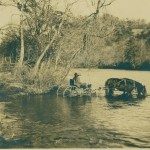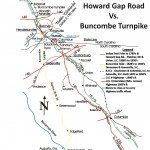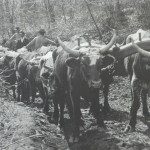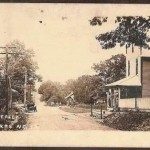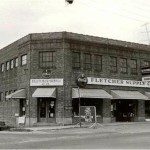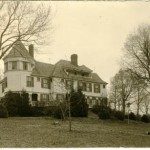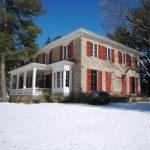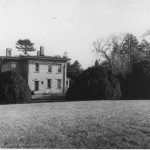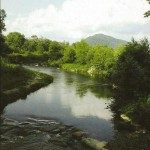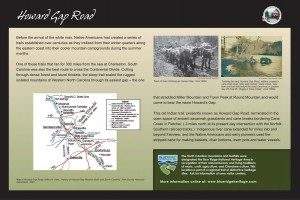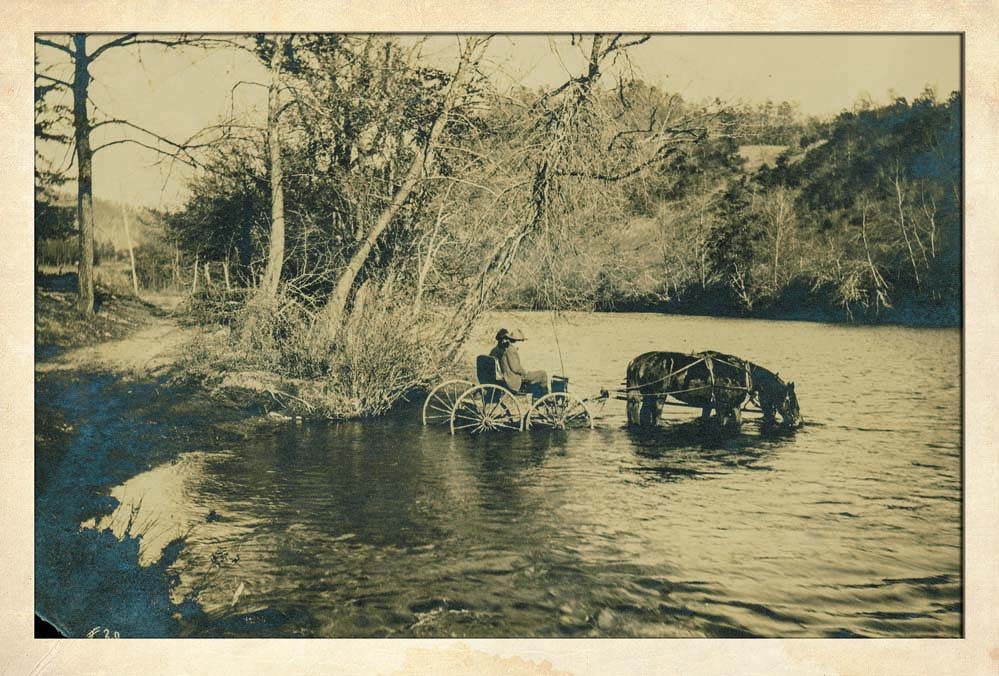
Quick Fact
Fletcher’s Inn and Tavern, established circa 1868, was one of many that served the drovers who herded thousands of hogs, cattle, chickens, turkeys, geese, goats, and other livestock to markets along the the route.

Fletcher Park
Fletcher, NC
Howard Gap Road in Fletcher, NC, has a long history as a hub of transportation for Native Americans, traders, drovers, and later, the “summer people” who traveled along it from Charleston to escape the lowland heat.
Much as did those summer people who came later, the Native Americans used this trail as they moved from their winter quarters along the east coast into their cooler mountain camping grounds during the summer. It ran for 300 miles from Charleston and was the best route to cross the Continental Divide and enter the mountains of North Carolina near modern-day Fletcher.
Named for Captain Thomas Howard, Howard Gap Road terminated in the open span of ancient savannah grasslands and dense cane breaks bordering Cane Creek in Fletcher. River cane, an indigenous plant, was used by Native Americans and early pioneers, who stripped cane for making baskets, chair bottoms, even pots and water vessels.
Some interesting facts about the town of Fletcher:
- In the 1790s the area was known as Murrayville after the large Scotch-Irish Murray clan who settled here. In 1837 it was renamed Shuffordsville when Jacob Shufford became Post Master. The area was finally designated as Fletcher in 1886 when Dr. G.W. Fletcher became the first station master for the new depot.
- In 1884 two Cherokee burial mounds located just northeast of Fletcher on Cane Creek were discovered by the Smithsonian Institute.
- In 1886 Fletcher became home to the famous syndicated columnist Bill Nye, a contemporary of and much quoted by Mark Twain. He constructed a grand turreted mansion overlooking the broad expanse of the French Broad River at “Buck Shoals,” after which he named his house. The remains of the stone foundation still exist and are now marked and maintained as a part of the Sierra Nevada Brewing Company’s facility.
- In the late 1800s several large summer homes were constructed by wealthy plantation owners from Charleston, SC and New Orleans, of which at least four have been renovated and maintained.
- In the 1940-50s an exclusive polo club and practice field were located in the present corn field on Howard Gap Road across from Fletcher Community Park.
Fletcher continues to serve as a hub of transportation into the 21st century. Conveniently located between the towns of Asheville and Hendersonville, Fletcher is bisected by the four-lane US Highway 25, which once was the old “plank road,” also known as the historic “Buncombe Turnpike.” Interstate 26 runs along Fletcher’s western border, and NC Highway 280, entering from the town’s west, passes by the Asheville Regional Airport.
![]() The Blue Ridge Heritage Trail is a program of the Blue Ridge National Heritage Area Partnership.
The Blue Ridge Heritage Trail is a program of the Blue Ridge National Heritage Area Partnership.
